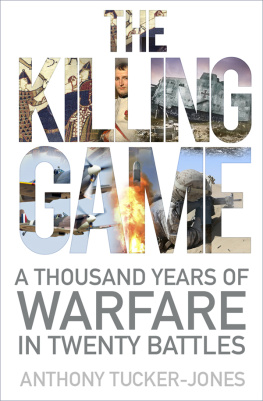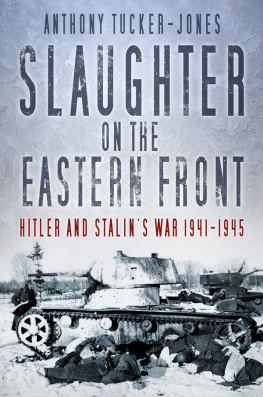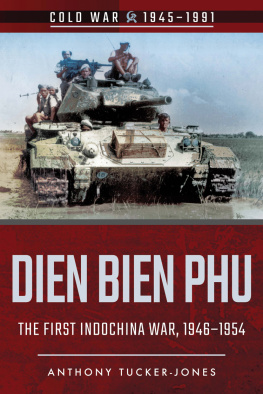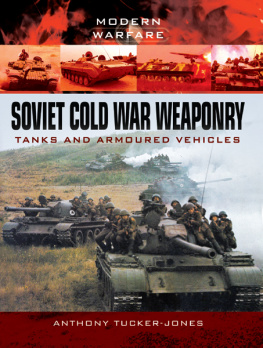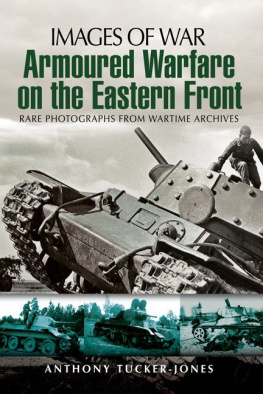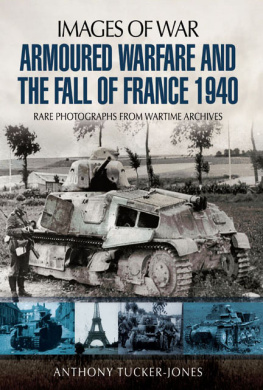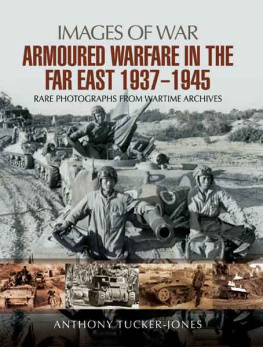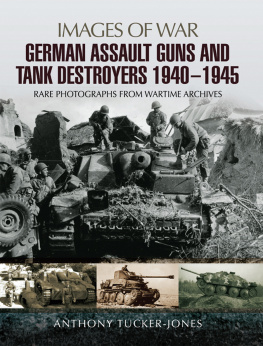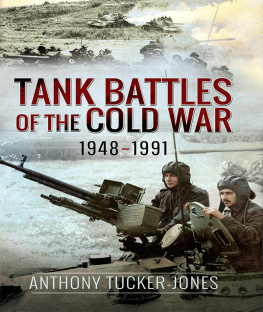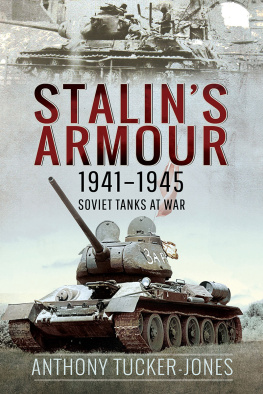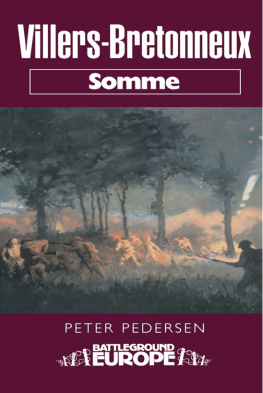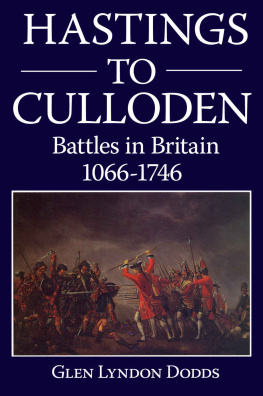Contents
Guide

Also by Anthony Tucker-Jones
Kursk 1943: Hitlers Bitter Harvest
Slaughter on the Eastern Front
The Rise of Militant Islam
Operation Dragoon
Stalins Revenge
Falaise: The Flawed Victory
Hitlers Great Panzer Heist
COLD WAR
Dien Bien Phu
Soviet Cold War Weaponry: Aircraft, Warships, Missiles and Artillery
Soviet Cold War Weaponry: Tanks and Armoured Vehicles
MODERN WARFARE
The Iraq War: Operation Iraqi Freedom 20032011
The Afghan War: Operation Enduring Freedom 20012014
The Gulf War: Operation Desert Storm 19901991
The Vietnam War: The Tet Offensive 1968
IMAGES OF WAR
The Battle for Budapest 19441945
The Battle for the Caucasus 19421943
The Battle for the Crimea 19411944
The Battle for Kharkov 19411943
The Eastern Front Air War 19411945
Kalashnikov in Combat
The SovietAfghan War
Armoured Warfare in the ArabIsraeli Conflicts
Armoured Warfare in the Korean War
Armoured Warfare in Northwest Europe 19441945
Armoured Warfare from the Riviera to the Rhine 19441945
Armoured Warfare and the Waffen-SS 19441945
Armoured Warfare in the Battle for Normandy
Armoured Warfare in the Italian Campaign 19431945
Armoured Warfare in the Far East 19371945
Armoured Warfare and Hitlers Allies 19411945
Armoured Warfare on the Eastern Front
Armoured Warfare in the North African Campaign
Armoured Warfare and the Fall of France 1940
Armoured Warfare in the First World War 19161918
T-54/55: The Soviet Armys Cold War Main Battle Tank
Tiger I & II
The Panther Tank: Hitlers T-34 Killer
The Panzer IV: Hitlers Rock
The Panzer III: Hitlers Beast of Burden
German Assault Guns and Tank Destroyers 19401945
T-34: The Red Amys Legendary Medium Tank

For Amelia, Henrietta and Ophelia who make it all worthwhile
First published 2018
The History Press
The Mill, Brimscombe Port
Stroud, Gloucestershire, GL5 2QG
www.thehistorypress.co.uk
Anthony Tucker-Jones, 2018
The right of Anthony Tucker-Jones to be identified as the Author of this work has been asserted in accordance with the Copyright, Designs and Patents Act 1988.
All rights reserved. No part of this book may be reprinted or reproduced or utilised in any form or by any electronic, mechanical or other means, now known or hereafter invented, including photocopying and recording, or in any information storage or retrieval system, without the permission in writing from the Publishers.
British Library Cataloguing in Publication Data.
A catalogue record for this book is available from the British Library.
ISBN 978 0 7509 8830 8
Typesetting and origination by The History Press
Printed and bound in Great Britain by TJ International Ltd
eBook converted by Geethik Technologies
C ONTENTS
C ACOPHONY OF W AR
There is always a racket, often drums, chanting or just plain banging. The trick is, you get your game face on and psych out your opponent and that often involves noise a lot of noise. It is all a game really. You have to wage psychological warfare against your enemy before the fighting even starts. You have to convince your enemy that you are more likely to kill him, than him kill you.
Just before battle a soldier will get a nagging knot in the pit of his stomach, even feel sick at the thought of dying or killing another human being. The taste of bile is never pleasant. There is no consolation save gripping your weapon even tighter as if it were some lucky talisman. When the adrenalin cuts in you have to channel it into fight, not flight. Running is for cowards.
It is the opening noise of battle that first tests a mans courage. While waiting for the enemy there will be the steady tramp of thousands of feet, or worse still the pounding of thousands of feet charging towards you. Loud rumbling might herald the approach of chariots full of spearmen and archers; or thunder signal galloping hooves and cavalrymen armed with lances.
Once an army is deployed, the soldier has to endure the whistle of arrows or musket balls, or the whizz of cannonballs flying through the ranks arrayed around him. The soldiers lot in life is to endure all this, for he cannot move without orders, if he does then desertion is always punishable by death. All this carnage and mayhem before the soldier has even got into battle.
He will see the distant flashes followed by the boom of the guns. Pray dont let it be me, thinks the soldier, please dont let it be me or if it is, make it quick. Dont let something be torn off followed by searing agony. No soldier wants to die listening to his own screams as his blood ebbs away in the dirt. That is a cruel end. likely to make his brothers-in-arms throw down their weapons and flee in blind terror. In some instances, though, death is preferable if it means not being dragged off to the temple and having your still-beating heart torn from your chest. Never listen to the cacophony of war, only listen for orders and press on, no matter what happens.
In 1879 British soldiers could hear a terrible rumble, like an oncoming freight train, it heralded the onslaught of 30,000 Zulu warriors. When the Zulus got closer, they began to bang their spears on their cowhide shields and chant usuthu (kill). The disciplined but outnumbered redcoats bravely held their ground and prepared to fight to the death. There was nowhere to go you could not outrun a Zulu impi. Nor should you listen to their terror-inducing death chants that formed part of the cacophony of war.
I NTRODUCTION
T HE K ILLING G AME
Believe it or not, farmers started it all the killing game. When some of the very first cultivators of crops and livestock settled around the fertile Nile, Euphrates and Tigris Rivers, mankind stopped being nomadic. Holding onto land became a fight for survival. Early wars were over access to food and water, but as cities sprang up wars were fought between powerful city states, then unified kingdoms and mighty empires. Squabbling farmers were one thing, but organised warfare brought the violence to a whole new level.
A quick namecheck with the Assyrians, Babylonians, Egyptians, Hittites and Sumerians in the period from 3,500 BC highlights they are all famous for their military prowess as much as their civilising influences in the Middle East. The Sumerians were some of the very first people to conduct organised warfare and were the first to employ metal for weapons and wear armour. They were also the first to use the chariot and the phalanx. The destruction of Nineveh on the Tigris in 612 BC by the Babylonians marked the end of almost 2,000 years of Assyrian military dominance, leaving the Persians in the ascendancy.
Technologically, the evolution of warfare was painfully slow. During this long period cavalry and chariots were the shock troops of their day. They provided the mobile punch to terrorise enemy infantry. It is often referred to as the Age of the Chariot. Common foot soldiers were armed with the axe, sword, spear, shield and bow notably the latter, although portrayed on ancient monuments from the end of the fourth millennium, was not used by charioteers until after 2000 BC .

